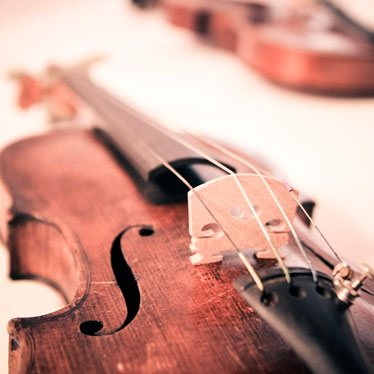What Is The Difference Between Violins?

Since the violin has, for many centuries, been a favorite instrument of gifted performers around the globe, you’d think that clearly outlined characteristics would be available about it. What makes for a great violin? Why does one violin cost thousands of dollars more than another, very similar instrument? Wouldn’t it make sense to have defined standards? Of course it would.
Yet, part of the reason that there are numerous, confusing differences between violins is due to the unique nature of this beloved instrument. Made from living materials and carefully crafted and fitted out by a skilled artisan (called a luthier), every newly-made violin is a work of art. And while you can broadly classify artwork into certain categories, there simply isn’t any cut-and-dry method for accurate comparisons. It’s an extremely subjective exercise and dependent upon the viewer, or listener, if you’re comparing violins.
However, you can learn some basics about the differences between violins. By understanding how violins are classified and sold, you can get a general picture about the violin you need and be ready when you start shopping for your instrument.
Classifications
Violins are usually classified as beginner, intermediate, and advanced (professional).
But, they are also further classified by their size. A full size violin is 4/4, and anything smaller than that is a fractional size percentage. The importance of playing a correctly sized violin cannot be overemphasized. If you buy a violin hoping that your child will grow into it, you risk serious injury. Using an instrument that is too big can cause undue strain on your child’s wrist, back, and neck.
However, you aren’t limited in the quality level of the violin by the size. There are intermediate and advanced model violins available in all sizes. Therefore, you don’t have to wait until your child is ready for a full size violin to buy a quality instrument.
A Word about Beginner Violins
Many violinists use the term ‘beginner violin’ as synonymous with poor quality sound, or by equating it to some other playing difficulty. For instance, the violin may sound “tinny,” or it responds poorly to different bow pressure, speed, or position. Although it can also refer to a violin that is smaller than a full size instrument, a beginner violin typically means that the instrument leaves much to be desired in its resonance and play-ability.
Indeed, in the past, a beginner violin was exactly that. Unwilling to spend a large chunk of money on an instrument that the student might decide isn’t his or her ‘cup of tea’ six months down the road, prudent parents are generally hesitant to invest in a quality instrument at the first sign of interest. The materials (tonewoods) used for crafting beginner violins are generally less expensive, and many times inferior.
However, there are some excellent brands being offered nowadays and beginner violin kits aren’t what they used to be. You can find quality manufactured violins that really inspire a love of music and help encourage student progress through the playable ease and rich tones produced on these affordable, yet superior instruments. These beginner violins feature maple ribs (sides), spruce top and back, hardwood fingerboards, chin rests, and tailpieces, and have been fitted out by a qualified luthier.
How Violins Are Priced
There is a general lack of conformity (industry guidelines) surrounding violin purchases. Typically dealers will set prices according to their own criteria. They generally value appearance and provenance (how rare the violin is) over sound, projection, or the ease of playing high notes.
For example, you may find that the cost of a rare, great condition, Italian violin is much greater (in the thousands) than a new, manufactured instrument. However, the sound produced and the playability on the production model can be just as rich, deep, and pleasing as that of the more expensive model. Rarity will make one violin more expensive than another, but it doesn’t necessarily guarantee superior sound.
Violinists tend to classify violins according to how well they are able to:
- Resonate (vibrate)
- Tonal quality and sound projection
- Ability to bow clear notes on the high G and E strings and perform other advanced bowing techniques
What to Look For
When you’ve decided to purchase a violin, don’t be overly influenced by classification. Take your instructor or another violinist with you, know the size that you need, and listen to each instrument before asking the price. Some beginner violin outfits might surprise you with their excellent sound. After playing them for yourself, choose the violin you like best.
The real test when comparing the differences between violins is how well the instrument sounds and how comfortable you feel playing it. You can’t go wrong if you choose a violin that will offer you years of performance enjoyment.


